The Etruscan Temple
Since the Etruscans had contact with Greek ideas and art forms, it is not surprising that Etruscan temples echoed some characteristics of Greek temples. Although no Etruscan temples have survived intact, the Roman architect Vitruvius wrote about them, and models have been constructed based on his description.
These temples used the familiar Greek elements of column, lintel, and pediment; however the Etruscan temple was not made from stone. It was constructed from wood, sun-dried bricks and decorated with terra-cotta sculpture.
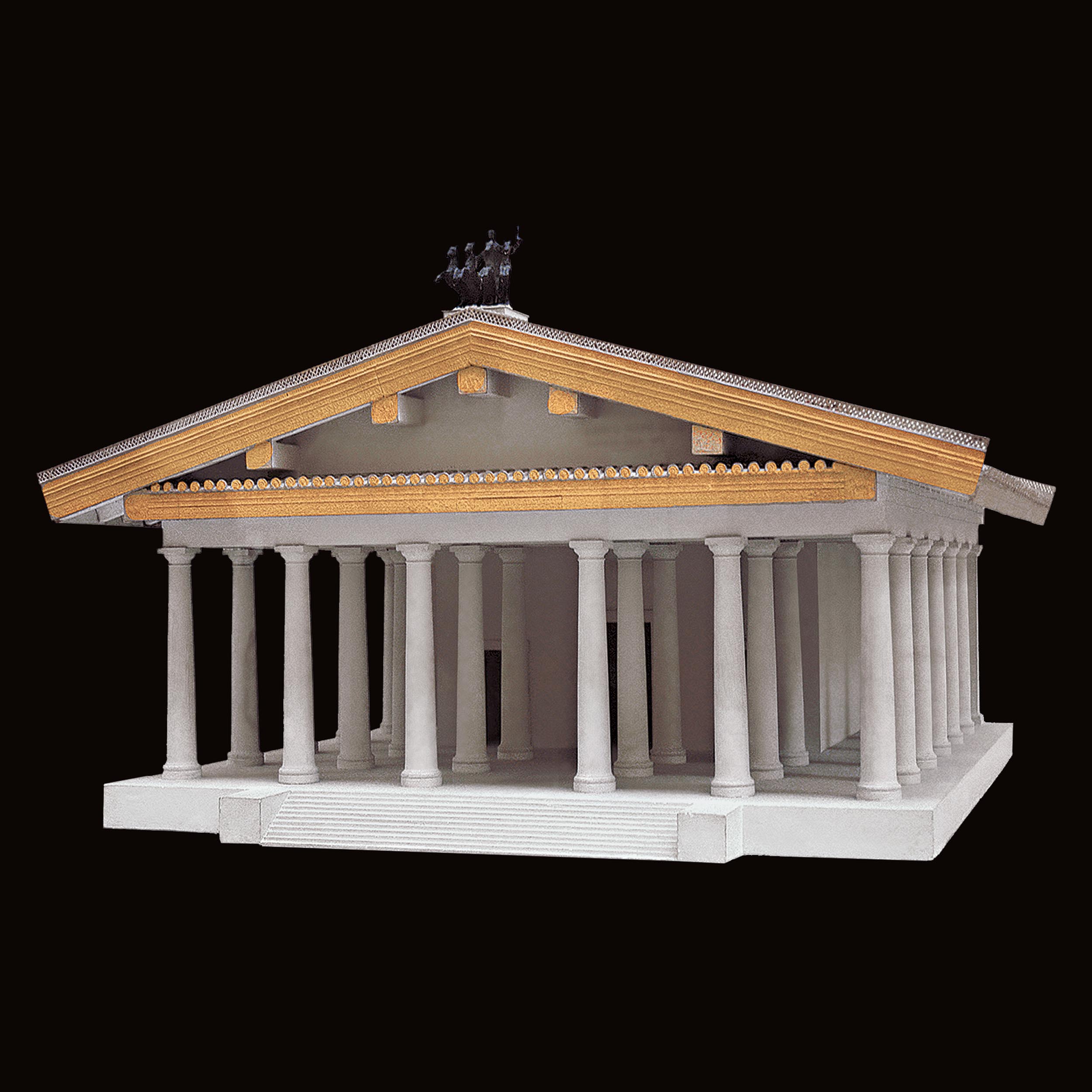 The emphasis is on a highly decorated façade and an entrance only at the front. Columns were placed on the porch only and the rest of the building is enclosed to provide three cellas, one for each of the three major Etruscan deities: Tinia, Uni, and Menrva.
The emphasis is on a highly decorated façade and an entrance only at the front. Columns were placed on the porch only and the rest of the building is enclosed to provide three cellas, one for each of the three major Etruscan deities: Tinia, Uni, and Menrva.
Rather than place figures in the pediment triangle, as the Greeks had done, the Etruscan sculptor put them on the temple roof. The podium on which the temple rested is much higher than in Greece and the augur may have stood on its edge to make his divinations.
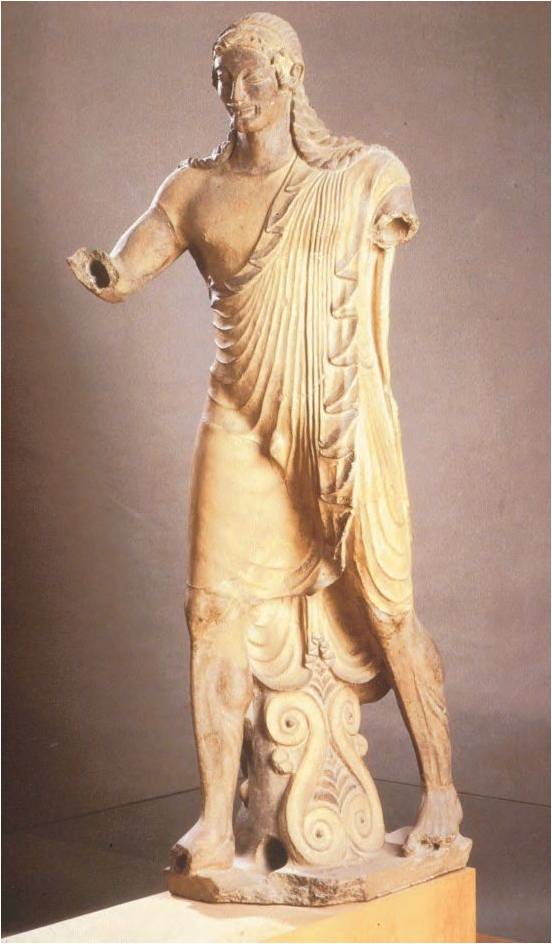 The best preserved of these rooftop statues is one of Apollo. He was found in the Etruscan city of Veii. What is unique about this Archaic Etruscan figure is that it was modeled from clay rather than carved from stone. Apollo is striding forward with arms outstretched, a dramatic contrast to the rigid symmetry of the Archaic Greek kouros. He is also draped rather than nude like the kouros.
The best preserved of these rooftop statues is one of Apollo. He was found in the Etruscan city of Veii. What is unique about this Archaic Etruscan figure is that it was modeled from clay rather than carved from stone. Apollo is striding forward with arms outstretched, a dramatic contrast to the rigid symmetry of the Archaic Greek kouros. He is also draped rather than nude like the kouros.
An immediately recognizable stylistic link between the Archaic styles of Etruria and Greece is his expression: Apollo has the same half smile as his kourai counterparts and his hair is represented by a geometric pattern of loops and braids much like the Kourai's.
Notice the motif to help support the figure.
To take care of his responsibilities as a Sun God, Apollo would need a way to get around. Since his traditional vehicle was a chariot, Apollo would need these two beautiful, very naturalistic winged horses, also modeled in clay – high relief.
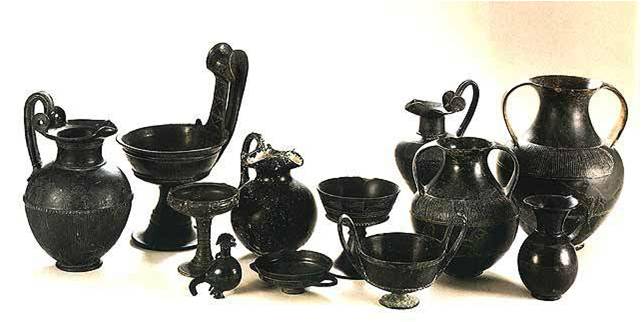 Etruscans are also famous for their black pottery called bucherro.
Etruscans are also famous for their black pottery called bucherro.
Unlike the Greeks, the Etruscans paid particular attention to the cult of the dead; their necropolises constitute the richest of all their surviving remains. In the hills of the Etruscan countryside some tombs were made of a soft volcanic soil called tufa. Tufa could be easily dug but when exposed to air, it hardened. This is very similar to the cut tombs of the Egyptians. The Etruscans also clustered their tombs together to create necropoli as the Egyptians had done.
In some cities, tombs are built like underground houses and are decorated with all the usual household paintings and furnished with all the usual household equipment so that the dead man can simply resume and continue his daily life.
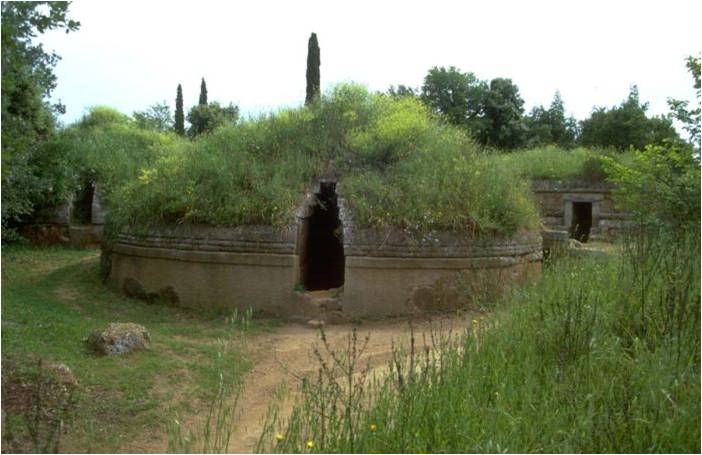
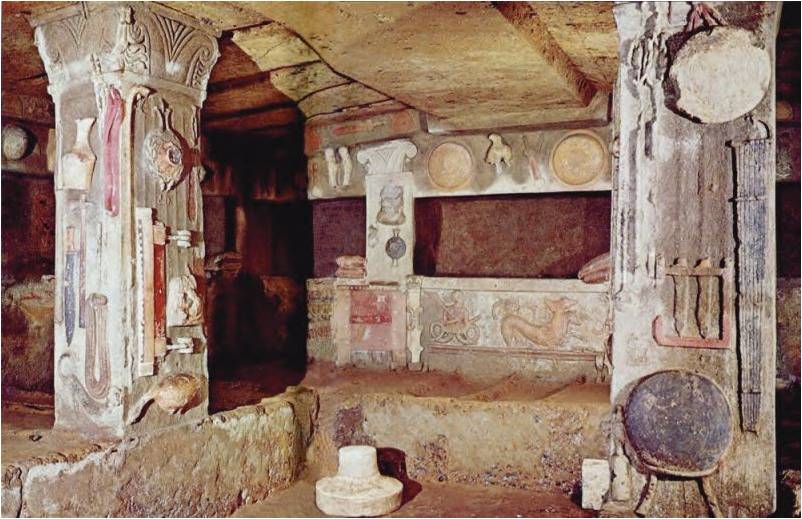 Later, they built structures above-ground. They seemed to think that their afterlife would be much like their daily life because their tombs were made to look like homes. Interiors had architectural touches, were divided into separate rooms, and furniture was added or carved from the tufa.
Later, they built structures above-ground. They seemed to think that their afterlife would be much like their daily life because their tombs were made to look like homes. Interiors had architectural touches, were divided into separate rooms, and furniture was added or carved from the tufa.
The Tomb of the Relief's is tufa-carved to look as if it has a beamed ceiling that is supported by square columns. The columns divide the space into chambers resembling rooms. The vertical surfaces of the walls and columns appear to be hung with household tools and utensils like swords, saws, and pottery jars.
They may look real, but they are relief carvings that have been painted to make them as realistic as possible. Tomb interiors were also painted with fresco. Popular scenes showed people enjoying life with their family and friends, in nature or in social situations like 'banqueting' and 'reveling'.
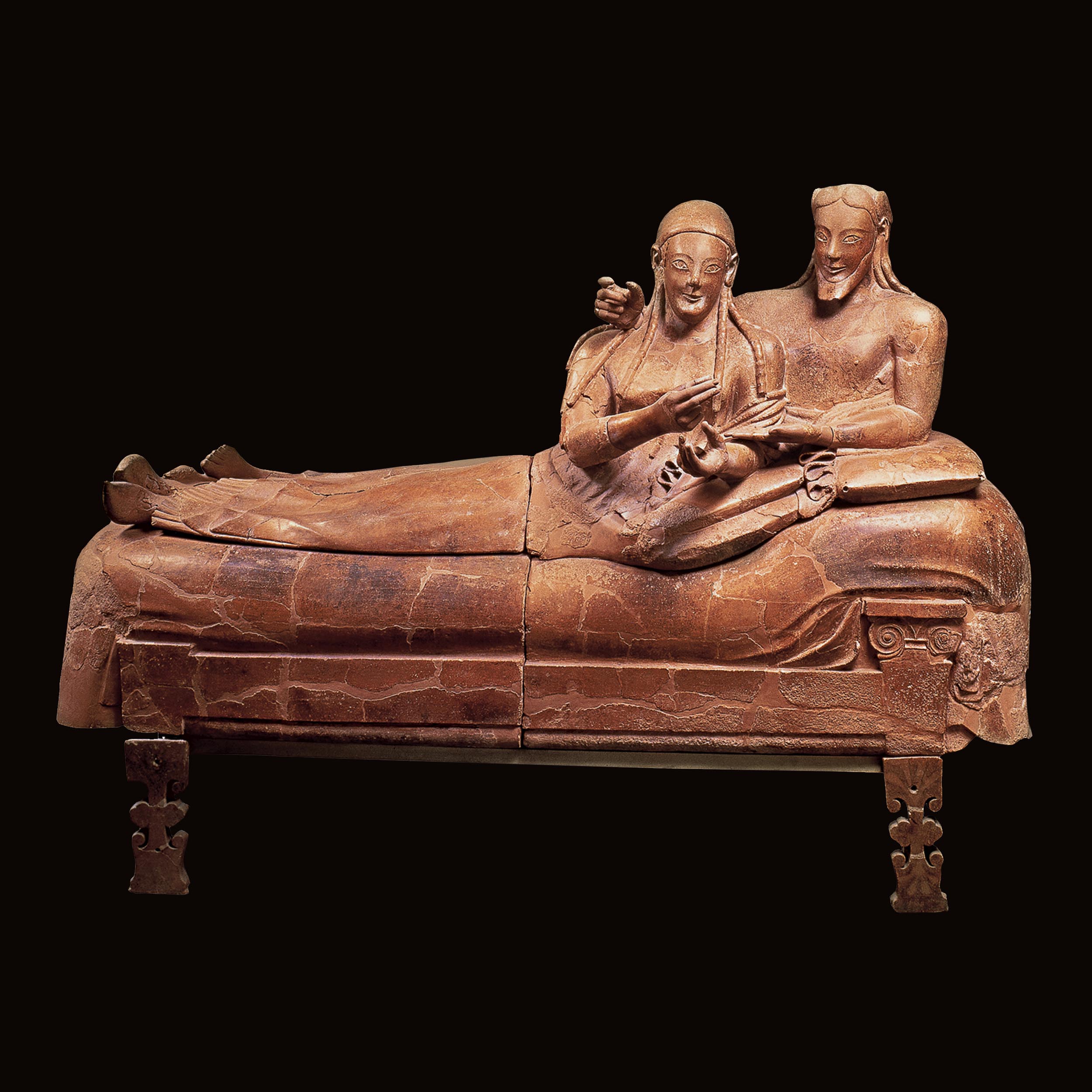 In the scene from the Tomb of the Leopards a group of young men are banqueting. Two are reclining on a sofa (one is dark, the other light) while another appears to notice the wine pitcher needs refilling. The Etruscans dine while reclining on couches like the Greeks and the Romans.
In the scene from the Tomb of the Leopards a group of young men are banqueting. Two are reclining on a sofa (one is dark, the other light) while another appears to notice the wine pitcher needs refilling. The Etruscans dine while reclining on couches like the Greeks and the Romans.
A Greek historian of the 4th century BCE wrote: "...Further they dine, not with their own husbands, but with any men who happen to be present, and they pledge with wine any whom they wish. They also drink excessively and are very good looking. The Etruscans rear all the babies that are born, not knowing who the father is in any single case....."
The Etruscans at first practiced cremation and some of their earliest grave goods were cinerary urn. They were usually decorated with a figure to represent the deceased which may have been a portrait likeness or simply a type.
In 509 BC the Romans finally expelled the Etruscan King, Tarquin the Proud. It then became a Republic. Once its republic was established, Rome quickly set about bringing neighboring cities into its Latin League, where they could be watched and used to further Rome's ambitions. Rome began its attacks on Etruria in approximately 498 BCE and concluded in 264 BCE with a complete conquest of Etruria. They endured a total of 234 years varying between conflicts, counter attacks, reprisals and truces - an extremely long period of time. With the loss of political independence, the cycle of an ancient people who for centuries had been the cultural and economic leaders of the western Mediterranean came to an end.
"The Etruscans, as everyone knows, were the people who occupied the middle of Italy in early Roman days, and whom the Romans, in their usual neighborly fashion, wiped out entirely in order to make room for Rome with a very big R. "
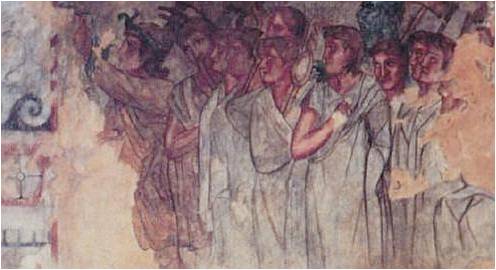
- D.H. Lawrence in Etruscan Places